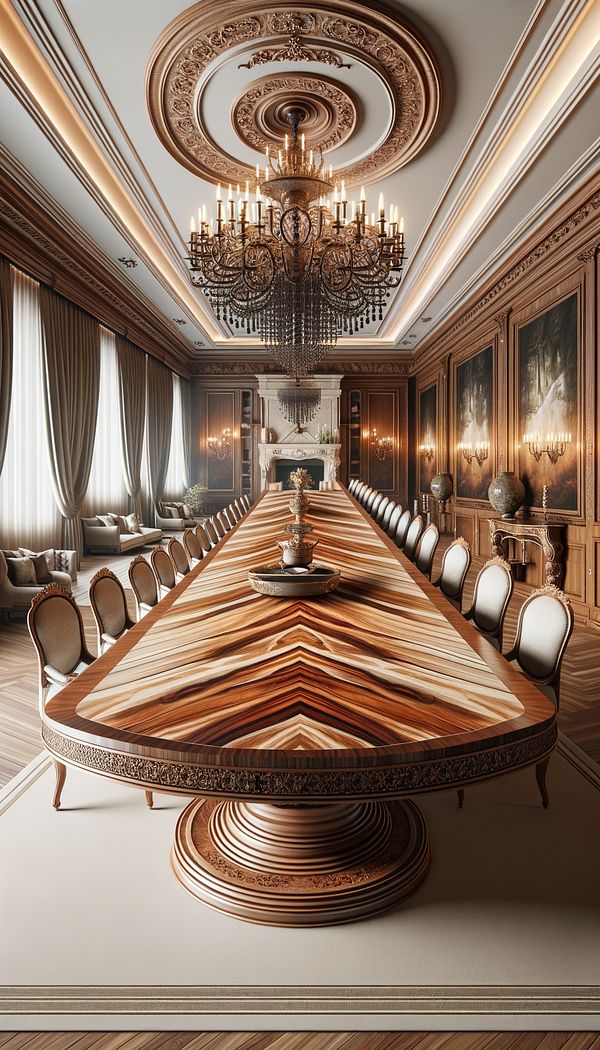What is Slip Match?
Slip match is a method used to arrange wood veneer sheets in a panel.
Description
In the realm of interior design, particularly when working with wood-based elements, the technique known as slip match involves arranging sequential sheets of wood veneer so that they are laid out side by side on a panel. This method ensures that the wood grains run in the same direction, providing a continuous visual flow across the sheets. Unlike other matching techniques that may seek to mirror or rotate the veneer sheets for different effects, slip match focuses on alignment and repetition, showcasing the natural beauty of the wood grain in a coherent manner.
The slip match technique is often applied in the creation of furniture, cabinetry, and wall panels, among other wood-based interior elements. Its appeal lies in the subtle yet elegant continuity it brings to the visual appearance, making it a popular choice among interior designers and homeowners alike. While the uniformity of the grain direction enhances the sense of space and fluidity in a room, the slight variations between the veneer sheets ensure each piece has its unique charm.
Usage
A prime example of slip match in application is the creation of a large dining room table where multiple sheets of veneer are used to cover the top surface. Here, the veneer sheets would be laid out in a slip match pattern, ensuring the wood grains all point in the same direction, which not only enhances the table's aesthetic appeal but also creates a feeling of harmony and continuity throughout the dining area. Another common apllication is in wall panelling, where large surfaces are covered with slip matched wood veneer to create a consistent and elegant look.
FAQs
-
How does slip match differ from book match?
Slip match and book match are both techniques used to arrange wood veneer sheets, but they differ in the orientation of those sheets. In slip match, the sheets are laid out side by side with their grain running in the same direction, creating a uniform look. In contrast, book match involves mirroring two veneer sheets at the seam, resulting in a symmetrical, mirrored appearance. Each method brings a distinct aesthetic to wood surfaces.
-
Is slip match suitable for all types of wood veneers?
While slip match can be applied to most types of wood veneers, the technique is especially effective on woods with straight, consistent grain patterns. Woods with more irregular grain or significant variations might not achieve the desired uniformity or coherence when using the slip match method. Choosing the right type of wood veneer for slip matching depends on the desired aesthetic and the characteristics of the wood.
-
Can slip match be applied to curved surfaces?
Slip match is primarily used on flat surfaces like tabletops or paneling due to the nature of laying veneer sheets side by side in the same grain direction. Applying slip match to curved surfaces can be challenging and may not achieve the desired effect due to difficulties in maintaining grain direction and alignment across the curve. For curved surfaces, other veneer matching techniques might be more suitable.
Practical Application
When planning to use the slip match technique in your design projects, ensure that you select veneer sheets from the same log when possible, as this helps in maintaining the uniformity of the grain and color across the sheets. Consider the light direction in the space as well since it can significantly impact the visual perception of the wood grain. Lastly, pay attention to the scale of the project; larger surfaces may require careful planning to achieve a seamless transition between sheets.
-
Furniture Types599 articles
-
Materials & Textiles360 articles
-
Wall Treatments & Finishes157 articles
-
MoldingMolding is the use of decorative strips to enhance architectural features and spaces.
-
EscritoireAn escritoire is a writing desk, typically featuring a hinged writing surface.
-
WebbingWebbing is a strong, flexible strip of fabric used in furniture construction.
-
Antique SatinAntique satin is a type of woven fabric known for its glossy surface and dull back.
-
Bandy LegBandy Leg refers to a curvature present in furniture legs.
